Researchers in Institute of Modern Physics, Chinese Academy of Sciences(IMP) used He and O ions provided by 320 kV high-voltage platform to study the precipitates and defects in silicon co-implanted with helium and oxygen.
The work studies the effect of vacancy-type defects formed by helium implantation on the formation of precipitates and defects after thermal treatment. Vacancy-type defects, including bubbles and voids, are pre-introduced in the silicon wafer. Precipitates and defects in the He and O co-implanted sample are compared with the only O implanted sample.
Nano-bubbles or voids were introduced by He implantation, and after the subsequent implantation of oxygen ions, the nano-bubbles or voids collect oxygen and increase the oxygen content in the sample, as shown in Fig. 1 and Fig. 2, respectively.
Furthermore, nano-bubbles or voids can trap Si interstitials to decrease the dislocations at the edge of precipitates, as shown in Fig. 3. The density and shape of precipitates formed in the initial stage of the separation-by-implanted-oxygen process are related to the size and density of He induced vacancy-type defects (nano-bubbles and voids). The gettering of a high density of nano-bubbles is more efficient than that of a low density of voids.
The research result has been published in Nuclear Instruments and Methods in Physics Research B 269 (2011) 739-744.
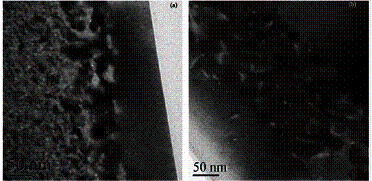
Fig. 1. XTEM micrographs in under focus mode show microstructures of silicon implanted with 30 keV He ions to 3×1016 ions/cm2 before annealing (a) and after annealing at 1073 K for 30 min (b).(Image by IMP)
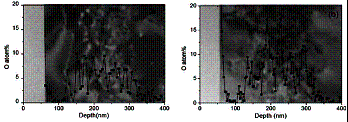
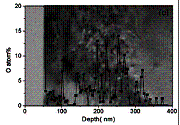
Fig. 2. XTEM micrographs show the distribution of precipitates and corresponding oxygen profiles measured by STEM with EDS of (a) formed by implantation of 30 keV He ions to 3×1016 ions/cm2 and annealing at 1073 K for 30 min, and then implantation of 100 keV O ions to 1 x 1017 ions/cm2 ; (b) formed by implantations of 30 keV He ions to 3×1016 ions/cm2 and 100 keV O ions to 1×1017 ions/cm2 and (c) formed by implantation of 100 keV O ions to 1×1017 ions/cm2. Annealing was performed at 1423 K for 3 h and then 1473 K for 2 h in Ar and 10% O2.(Image by IMP)
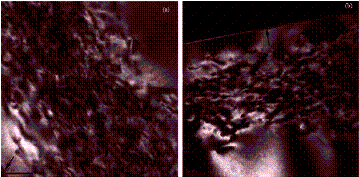
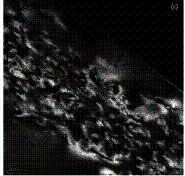
Fig. 3. XTEM micrographs under dark-field show the distribution of precipitates and corresponding oxygen profiles measured by STEM with EDS of (a) formed by implantation of 30 keV He ions to 3×1016 ions/cm2 and annealing at 1073 K for 30 min, and then implantation of 100 keV O ions to 1 x 1017 ions/cm2 ; (b) formed by implantations of 30 keV He ions to 3×1016 ions/cm2 and 100 keV O ions to 1×1017 ions/cm2 and (c) formed by implantation of 100 keV O ions to 1×1017 ions/cm2. Annealing was performed at 1423 K for 3 h and then 1473 K for 2 h in Ar and 10% O2. The implanted surface of the sample is given by an arrow. Dark lines are dislocations. (Image by IMP)

